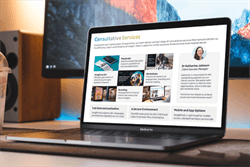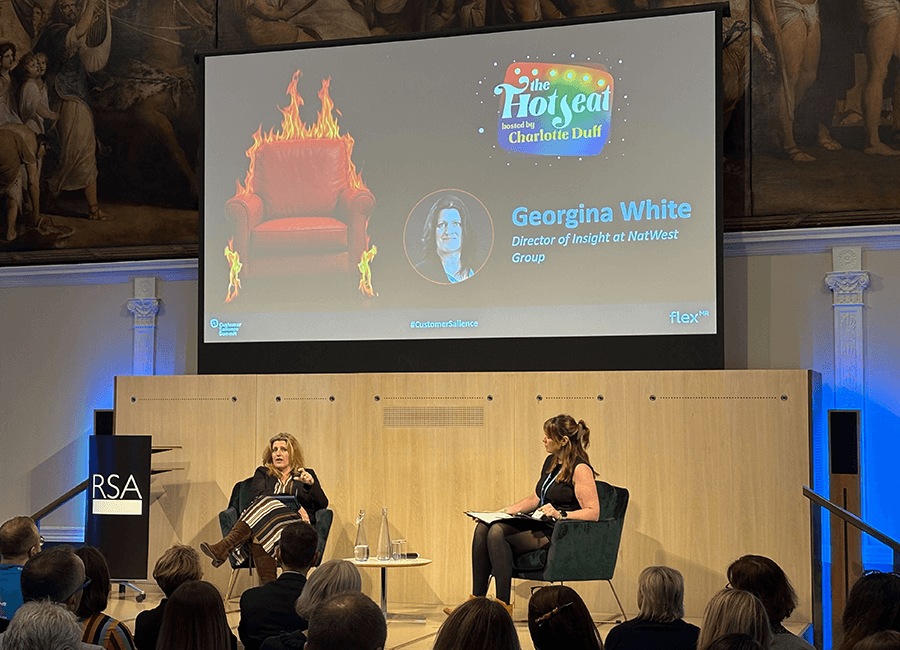How well do you know your customers?
It is a simple question, but important for the success of any business. The ability to fully understand your customers, not just the data they provide but also their needs and wants on a fundamental level, is crucial to creating business strategies that actually work for all parties involved. This customer-centric way of conducting business is what insight experts have been pushing for since its discovery, but there are still businesses and stakeholders that rebuke the notion as nothing but a ‘trend’.
It’s true that customer centricity has been a significant buzzword in market research, customer experience and business circles - and through all the discussion of importance, strategic advantage and competitive insights, the question remains: why has there been arguments and efforts put up against any significant steps made towards achieving its goals?
Could it be that, while the topic is still relevant today, there are pitfalls in the strategy? Are there challenges that put stakeholders off implementing it? What is the failing, or indeed failings, that prevent businesses from embracing customer centricity? In this guide, we’ll explore:
- The Concept and Pitfalls of Customer Centricity
- The Difference between Customer Centricity and Customer Salience
- How to Pitch the Business Case for Customer Centricity & Salience
- Aligning Decision Making & Customer Centricity
- How to Find and Choose the Right Technology
- Customer Salience-Based Research Methods
- How to Measure Customer-Centric and Salience Success
Understanding Customer Centricity
The Concept
Customer centricity is a strategy you will be familiar with, but it’s worth reiterating. Customer centricity is a strategy, business model and concept centred on pragmatic steps that “help companies achieve profitable growth by reimagining business processes end-to-end with the aid of digital technologies” (McKinsey, 2024).
The purpose of customer centricity is to pivot or replace the business processes to better align with customer needs. It involves a deep commitment to understanding customers on an individual level and delivering personalised solutions that not only meet but exceed their expectations. This approach transcends traditional customer service, embedding a customer-first mindset across all facets of an organisation, from product development and marketing to sales and after-sales support.
Customer centricity is heralded as the key to creating the ultimate customer experience, to gaining as close to 100% customer satisfaction as humanly possible, to be as customer-led in decision-making processes as they are expert- or experience-led. But is this truly the case? If it were, wouldn’t all businesses be making practical steps to becoming customer-centric? Why then do we still see ‘customer-centric’ strategies not hit their mark? Why are businesses not meeting their customer-centric strategy objectives?
| Tweet This | |
| How well do you know your customers? And are you prepared to find out the true answer to that question? |
The Pitfalls
There are challenges to this strategy that prevent businesses from immediately turning to it, but what exactly are they? There are two forms the customer-centric challenges present in:
- Internal resistance - Many organisations encounter significant challenges with cultural resistance when attempting to transition towards a customer-centric model. This resistance often stems from deeply ingrained traditional practices and mindsets that are focused on product or profit rather than the customer.
- Data Silos - Data fragmentation often impedes a holistic view of the customer, creating significant challenges for businesses striving to deliver personalised and seamless experiences. This fragmentation occurs when customer data is scattered across various departments and systems, leading to disjointed insights and an incomplete understanding of customer behaviours and preferences.
As much as there are general challenges to overcome, there are also current industry-wide challenges that impact an insight team’s ability to push for and implement customer-centric cultures in their businesses, including:
- Research workloads are only increasing according to ESOMAR’s Global Users & Buyers of Insights report 2023. Which, you think would be great for the industry, however, this doesn’t necessarily mean that the research is being used to its fullest extent in decision-making, and there is a not-insignificant chance that there are research projects being repeated due to the aforementioned data silos.
- Yet, according to data shared exclusively with Marketing Week, net spend on market research has been negative for the best part of a decade with some businesses turning to data and cheaper research sources.
- Adding to this, the Customer Gap (the distance between how customer-centric stakeholders believe they are and how customer-centric that actually are) means stakeholders believe they are putting all the effort they require into customer-centric decision making. But actionable insight and influencing change remain the biggest challenges for insight teams.
Customer centricity, while a good stepping stone towards success, isn’t helping insight teams to overcome these challenges, and hasn’t been enough to stop these challenges from impacting insight teams and experts throughout all industries.
The Solution: Customer Salience
So how do we overcome these challenges? Not through customer centricity in its most popular current form, but instead through Customer Salience. Where customer centricity encourages stakeholders to know the customer, Customer Salience takes the concept of customer centricity a step further, meeting those pitfalls head-on and providing ways to change the business’ culture to that of actionable insightfulness; it works hard to ensure the knowing, understanding and embedding customer insights in daily business life.
Understanding Customer Salience
The goal of Customer Salience for stakeholders and businesses is to better understand customers, and to use that understanding within decisions both big and small every day. Whether that’s to inform pivotal organisational strategies or simple day-to-day arrangements. As much as they pursue success, using insights seems to remain a challenge for stakeholders, even as we attempt to prove their worth (and by extension our own worth); the link between making relevant decisions and allowing relevant insights to guide decisions has not been received as clearly as we hope.
The goal of Customer Salience for insight experts and advocates is to embed a high level of customer salience within their organisation, this principle will shift the onus off of insight teams to communicate insights and fight to embed them into decision-making processes across the organisation. For years now, we have focussed our attention on the most influential stakeholders within senior management and the c-suite, but the Customer Salient approach expands our efforts to all stakeholder teams – widening the pool of prospective insight users to everyone in the organisation rather than a select group.
Even though there are benefits on both sides, whose responsibility is it to introduce, implement and uphold Customer Salience strategies? This question is likely the one to spark the most arguments in the initial stages, with no one wanting to take on more work than necessary. However, there is an answer.
In Paul Hudson’s lecture at LUMS, it was identified that this is everyone’s responsibility. Ideally, a task force of sorts should be set up with members hailing from all teams across the organisation to be that driving force on all levels, and this would likely be the best case scenario as long as those members were themselves dedicated to creating a culture of Customer Salience. Especially if this is a business that doesn’t use customer insights as well as they should, because this would be a great change to the foundations of the company.
| Tweet This | |
| There are many challenges to customer centricity that Customer Salience overcomes - it's just the next step towards success. |
Pitching the Business Case
As much as it makes sense above, shifting to the term ‘Customer Salience’ over the more widely-known customer centricity might not make sense to stakeholders. As insight experts, we understand the power of insights, their inherent value in key decision-making practices, and the impact they can have on business strategies. Yet, while more people preach the benefits of innovation, there are few who will apply it when there is a risk of failure.
As this is the current norm, it’s no wonder that insight teams across all industries need some help in convincing their stakeholders to change such a large aspect of the organisation – the culture –to embed customer insights in daily decision-making practices and Customer Salience into the minds of stakeholders everywhere.
To pitch Customer Salience effectively, insight experts and advocates need to understand that this is the way to generating those specific relevant insights that better develop strategies into versions that guide the organisation into a healthier, sustainable and steadfast future.
As with every strategy, each pitch should be unique to the business in mind. Before you pitch the idea of Customer Salience, you must first understand the business and stakeholders, how they operate, how they make a decision, how much influence is held within each team, how data flows throughout the organisation, and how customer salient your organisation is currently. Undertaking an audit will give you the insights needed to uncover new opportunities to embed Customer Salience in your business, and then you just need the courage to create and present the pitch.
Aligning Decision Making & Customer Centricity
The way in which teams, managers and leaders make decisions needs to be better understood, and better influenced to align with customer needs. Decision-making processes as they stand are not conducive to a successful culture of Customer Salience or indeed a culture of sustainable business success, so understanding the challenges that mire decision-making processes across all teams is key to defeating them. Some of these challenges include:
- Overcoming bad habits
- Shifting ownership of insights activation from research teams to stakeholders
- Creating regular research touchpoints to open access to data and insights
- Keeping up to date to fight stakeholder complacency
- Building understanding before taking action
Better aligning decision-making to customer centricity in these ways will aid in eradicating the challenge of the Customer Gap.
Another realignment measure should be to challenge the current customer preconceptions throughout an organisation. No matter what little information we have at the time, we are adept at pattern matching and have a distinct need to fill in the blanks to form a bigger picture; when this happens in businesses, this leads to assumptions about the current and target customer base that poses significant risk when these assumptions are factored into decision-making. Understanding and challenging the current preconceptions is an important task, and one that should be continually undertaken to ensure that any new incorrect assumptions are caught early and swiftly corrected.
Understanding where these assumptions come from is the key to this task. For example, the digital age has transformed how we interact with information, make decisions and ultimately shapes our understanding of customer opinions, behaviours and activity, and thus impacts stakeholder decision-making.
Finding the Right Technology
Only businesses that lay the proper groundwork will actually achieve that coveted status of being truly ‘Customer Salient’. This groundwork covers building up a new Customer Salient company culture, implementing new policies and processes that keep customer insights at the forefront of operations, and setting up the technological infrastructure needed across the organisation to gather, access, and communicate impactful insights.
Of the three, laying the technological infrastructure is the most practical and achievable thing you could do, and so it’s the best way to start. So, what technological infrastructure is needed to best permeate insights throughout an organisation:
- A dedicated online market research platform
- Dedicated communication channels
- Easily accessible online data warehouse
Artificial intelligence tools are a dime a dozen in the technological marketplace now, however, that doesn’t mean there aren’t some great examples that could help insight experts create the right processes and foundations for prosperous Customer Salience. Marketing-based AI tools, for example, can aid the better communication of these insights, designed to engage stakeholders, automate content distribution processes, and gather data on how successful communication and insight activation attempts have been thus far.
Employing market research AI tools means that insight experts can feasibly keep up with the increasing demand for more insights, with less resources. Automating certain processes could give insight experts a bit of breathing room to focus on the more important research processes such as design and implementation, as well as time to focus on how to better communicate insights to encourage activation.
Using up and coming technology, or keeping an eye on emerging technological trends is a great way to staying relevant and finding new ways of making processes easier. For example, the currently controversial topic of synthetic data could have some useful applications in Customer Salience; using synthetic data, insight teams could feasibly create hypothetical scenarios that may be rare or difficult to observe in real life, navigating challenging ethical or logistical concerns a little easier and gaining a sense of what actionable insights might be gained. It is not designed to replace human connection or proper research, but it still holds potential that needs more exploration.
Using the Right Research Methods
With such a vast marketplace of technological tools, it’s easy to become lost or indecisive when choosing the best research tools will work best with your research and Customer Salience programmes. With limited resources and more pressure from stakeholders to do more with less, the pressure put on insight teams has never been heavier and that only makes the challenge of picking the right tools worse. So let’s have a quick look at what is available and which tools could provide great impact in a Customer Salience-based research strategy.
Quantitative tools are arguably a little easier, because you can’t go wrong with a good survey tool. Surveys have stood the test of time for a reason, and good online survey tools hold the potential for quick, but in-depth, insight generation, and have easy user interfaces for insight experts and stakeholders alike to use. However, surveys have become synonymous with quantitative research; they are not the be-all-and-end-all of quantitative research, there are other tools such as polls, quantitative interviews and observation studies that can be equally as beneficial for Customer Salience research strategies.
There are many qualitative tools ready for insight experts to use, each with their own particular purpose. We would be remiss if we didn’t mention focus groups first though, both in synchronous and asynchronous form, as they are another staple of market research methodologies and can be used to great effect in most research programmes. Diary studies and scrapbook studies are also fantastic asynchronous tools to add to any arsenal when seeking in-depth insights into customer opinions, behaviours and activity.
Using market research to reform research processes is also an interestingly useful exercise. Using customer insights to challenge the norms of how insight teams create and distribute insights in businesses is a powerful way of understanding how successful a Customer Salience strategy actually is. Firstly, we can challenge how insight experts generate insights, understand how effective the current research tools, tactics and techniques are, and where research processes could be improved for better participant satisfaction and insight generation.
Secondly, we can use market research processes to better understand how stakeholders perceive market research, how much they value insights and how they might be convinced to think more about customers on a regular basis. The information gathered from both exercises will provide us with some great insights that can influence the creation of a better Customer Salience strategy.
| Tweet This | |
| Understanding these challenges, we stand a better chance at creating true Customer Salience cultures from the ground up and swaying stakeholders to the side of insights. |
Correctly Measuring Customer Centricity and Salience
With something so new and situational as Customer Salience, where do we start when it comes to measuring the success of any implemented strategy?
While market research provides a wealth of opportunity to measure the success of customer centricity, some of those methods do require more knowledge and expertise from insight professionals – something some businesses don’t have in-house. But there are market research techniques that most businesses know of and mostly use even if they don’t realise it, just not for the purpose of measuring customer-centricity. There are a few measures businesses currently used that can also indicate the strength and influence of customer-centricity within an organisation, including: customer satisfaction surveys, Net Promoter Score (NPS), customer service feedback, Customer Lifetime Value (CLV) and churn rate, and market research participation.
In terms of measuring Customer Salience, that’s a little trickier considering that it will present differently depending on the organisation, the strategy formed and objectives required. However, there are a few commonalities that might make it easier to start:
- The number of decisions made with insights on a daily basis across all teams
- The success rate of insight-driven strategies after customer salience strategies have been implemented
- The level of stakeholder engagement in market research and insights
As much as customer centricity is a key strategy, Customer Salience takes it that bit further to ensure relevance and action behind the build up of knowledge that customer centricity encourages. Thus, for those businesses who are already classed as ‘customer-centric’, the step to ‘customer salient’ shouldn’t be that large - but there is still a substantial way to go before any business can be considered truly ‘customer salient’.
Customer-Centric & Salience Resources
As much as customer centricity is a key strategy, Customer Salience takes it that bit further to ensure relevance and action behind the build up of knowledge that customer centricity encourages. Thus, for those businesses who are already classed as ‘customer-centric’, the step to ‘customer salient’ shouldn’t be that large - but there is still a substantial way to go before any business can be considered truly ‘customer salient’.
Using resources from toolkits, thought leadership articles such as these on GreenBook, advice from peer networking events and more, we stand a better chance at creating these cultures from the ground up and swaying stakeholders to the side of insights.


















